
Tamolan’s Tomb

Shah Begum’s Tomb (left) with tombs of Nesa Begum and Prince Khusru in the distance.
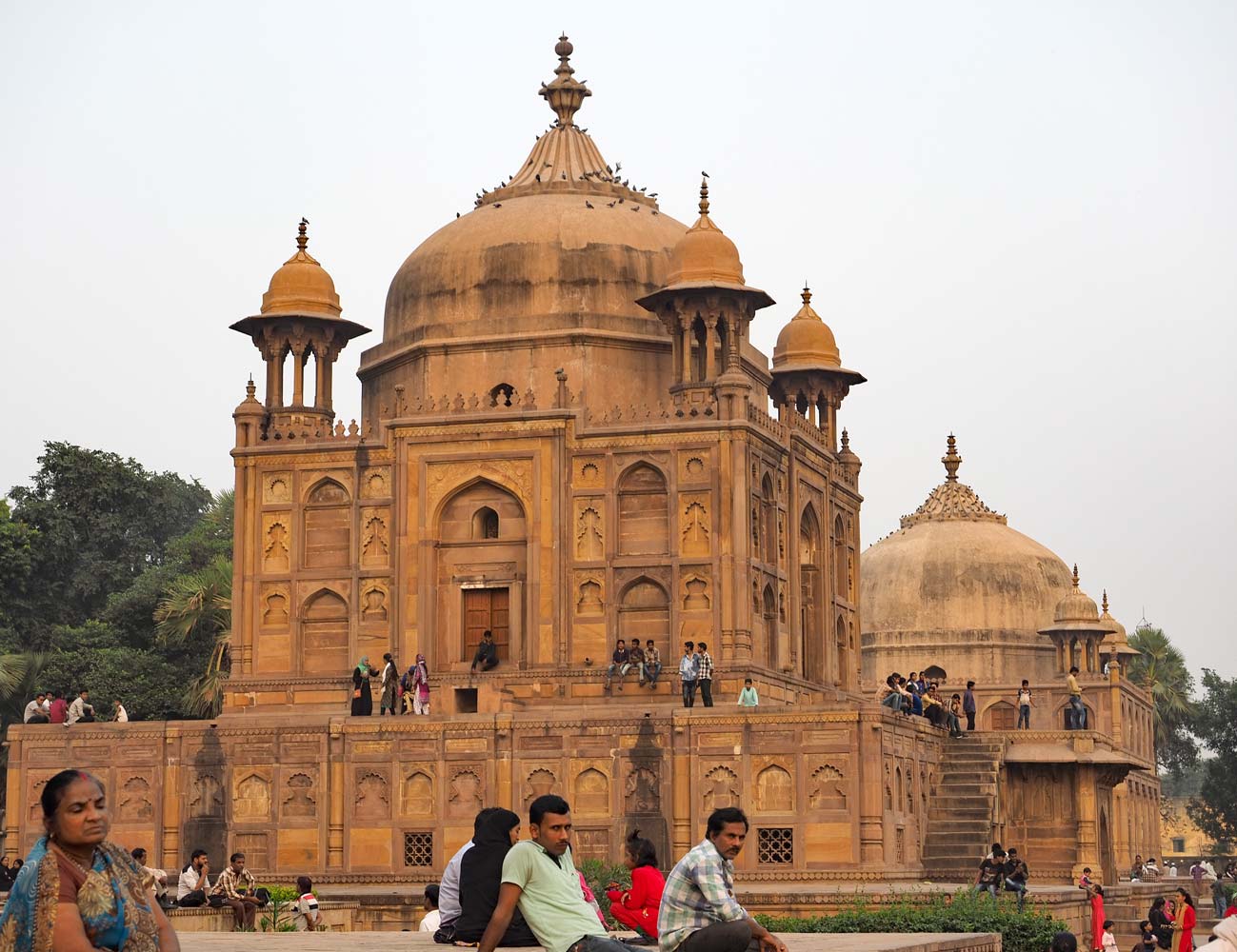
Nesa Begum’s Tomb

Decorative art inside Nesa Begum’s Tomb

Prince Khusru’s Tomb
12 Nov. Allahabad
A loud vibrating noise just outside the room made for
difficult sleep, but hotel staff couldn’t do anything about it. I dared not use
earplugs because then I might miss the alarm and my train. When morning dawned,
I easily got an autorickshaw for the short ride to the train station. Actually
there are two stations side by side, and I needed the Charbagh, then I asked the
way to Track 8, which is not next to Track 7 as one would expect, but close to
Track 1. The Lucknow-Prayag InterCity Express 14210 was waiting, and it turned
out that my Coach C1 was in the middle and the only air-conditioned chair car of
the whole train; ticket cost was 330 rupees. The somewhat bumpy ride southeast
to Allahabad’s Prayag station took a bit over four hours to cover the 195
kilometers. On the way I read in the newspaper about how a great many trains had
been delayed or canceled in recent days at Lucknow, for which a group of
protestors made their unhappiness known to the station manager, though fog had
caused most of the problems. Today the weather had sunshine with a bit of haze.
Prayag is an old name for Allahabad, which lies near the confluence of the
Yamuna and Ganges rivers plus the mythical Saraswati—all very sacred to
Hindus—and attract pilgrims year-round. The annual Magh Mela draws big crowds to
the site early in the year for holy dips, then every 12 years the Kumbh Mela—the
world’s largest human gathering—takes place here. The last one in 2013 drew a
crowd of 32 million on the main bathing day!
Prayag Junction station
sits inconveniently on the east edge of town, so I had a long autorickshaw ride
toward the center. I first tried the Royal Hotel, a basic place mentioned in the
Lonely Planet guidebook, but it was full. Other hotels turned out to be either
full or very expensive. Finally I pulled out the phone, went to booking.com, and
immediately got a reservation for a place on hectic Swami Vivekanand Marg.
Unfortunately the hotel didn’t accept foreigners. I tried a few other places
nearby and got an expensive 2000-rupee ($30.58) room at Milan “A Boutique Hotel”
on Leader Road. That’s more than I’ve ever paid for a hotel in India, but I was
getting tired of scouring town for a place to stay, plus this one offered
air-conditioning and was relatively clean and quiet.
In late afternoon I
walked west on the busy market road to Khusru Bagh, a large walled park with a
line-up of four beautiful sandstone tombs. I first came to Tamolan’s Tomb, which
lacks any inscription or grave to indicate for whom it was built. The next tomb to the
east is that of Shah Begum, the first wife of Emperor
Jehangir. There’s also a tomb built by Nesa Begum, the sister of Prince Khusru, but
never used as such. Lastly I came to the most notable tomb, that of Prince
Khusru—the eldest son of Emperor Jehangir—who tried and failed to overthrow his
newly enthroned brother Shah Jahan. Had the coup succeeded, Shah Jahan would not
have built the Taj Mahal. Lots of families, couples, and folks of all ages had come
to the park to relax, socialize, or play. On the way back to the hotel I turned
down a side street packed with restaurants and had a vegetarian thali in one,
where the staff translated the all-Hindi menu for me. The hotel had wi-fi, but
curiously signing in could only be done with the phone, not the computer.

Tamolan’s Tomb

Shah Begum’s
Tomb (left) with tombs of Nesa Begum and Prince Khusru in the distance.

Nesa Begum’s Tomb

Decorative art
inside Nesa Begum’s Tomb

Prince Khusru’s
Tomb
13 Nov. Allahabad
Nobody had told me, nor did I see a notice anywhere, but
when I peeked into the dining room in the morning I found that the hotel offers
a free and very tasty breakfast buffet of mostly Indian food. Afterward I worked
a few hours on sorting photos of the trip—I had taken a lot!
In early
afternoon I hopped on an autorickshaw for the ride to Sangam where the holy
rivers meet. Boatmen offered rides out to the middle of the confluence, and I
saw small groups of pilgrims doing so, but I was content to stay on shore and
admire the view.

Boatmen wait for
pilgrims to journey out to Sangam.
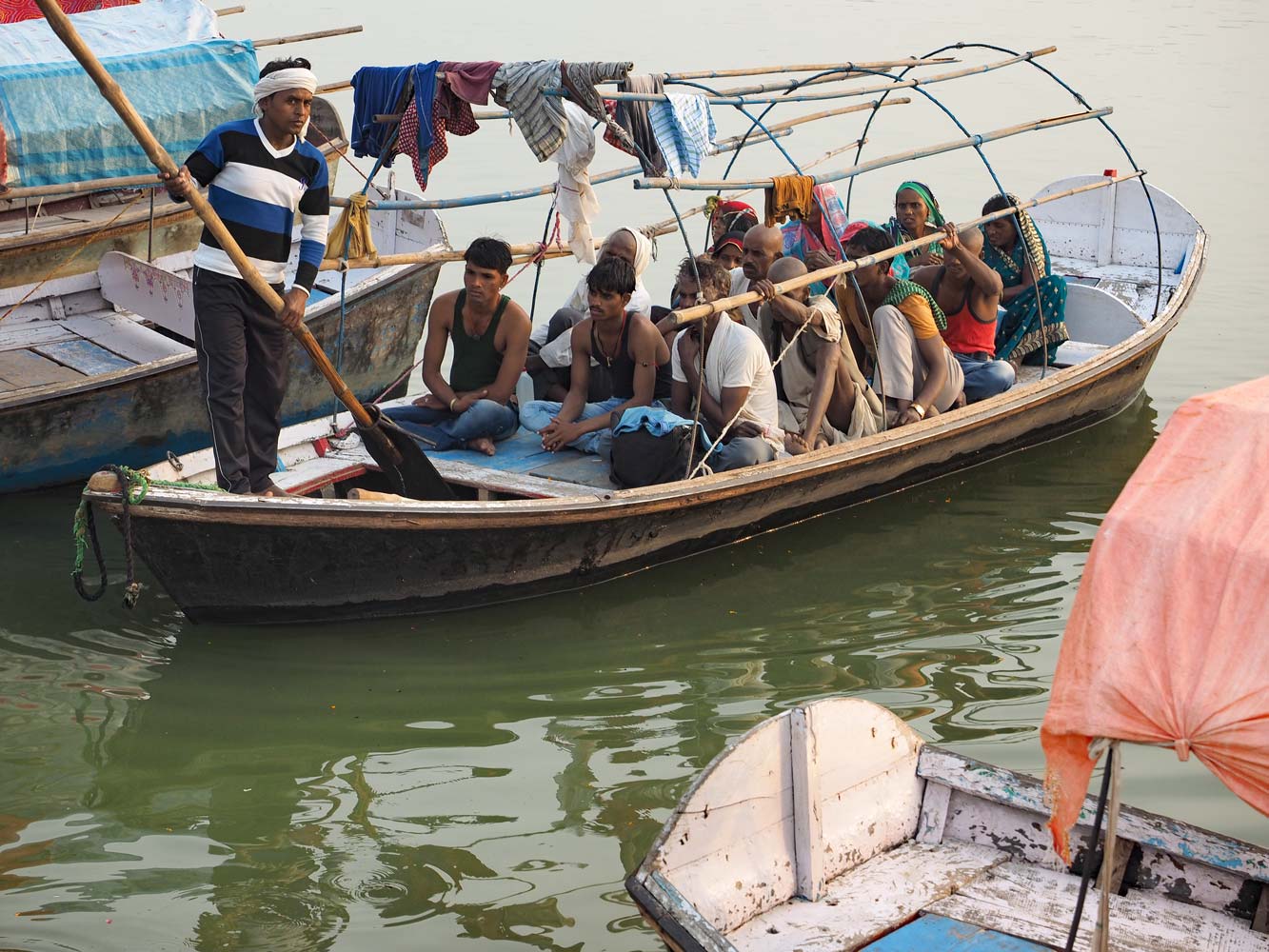
A pilgrim boat

The Yamuna
River glows in the late afternoon sunshine.
The massive sandstone Allahabad Fort, built by Mughal Emperor Akbar in 1583, rises above the banks of the Yamuna River just upstream from the confluence with the Ganges. He named it “Illahabas” (Blessed by God), which later became Allahabad. Unfortunately the military allows public access to just one area, Patalpuri Temple, also known as Akshaivat Temple (Indestructible Banyan Tree) for the huge tree that grows here. I followed a path through the towering fort walls and up to a courtyard with the famous tree, then descended steps to a long corridor that leads to a room full of small shrines to gods, saints, and kings. I tried to leave a small coin at each of the images to keep them and the priests happy.
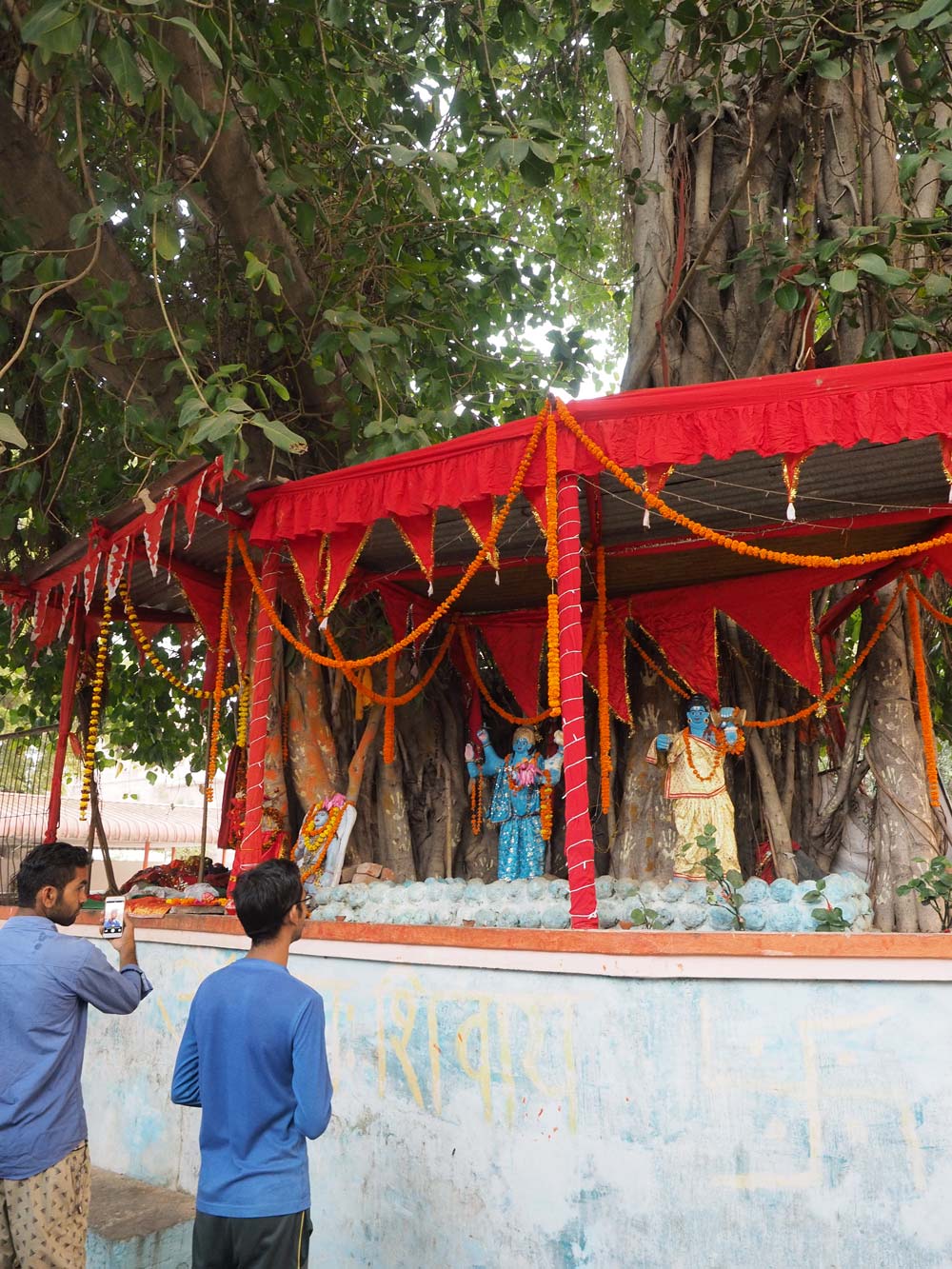
The Indestructible Banyan Tree
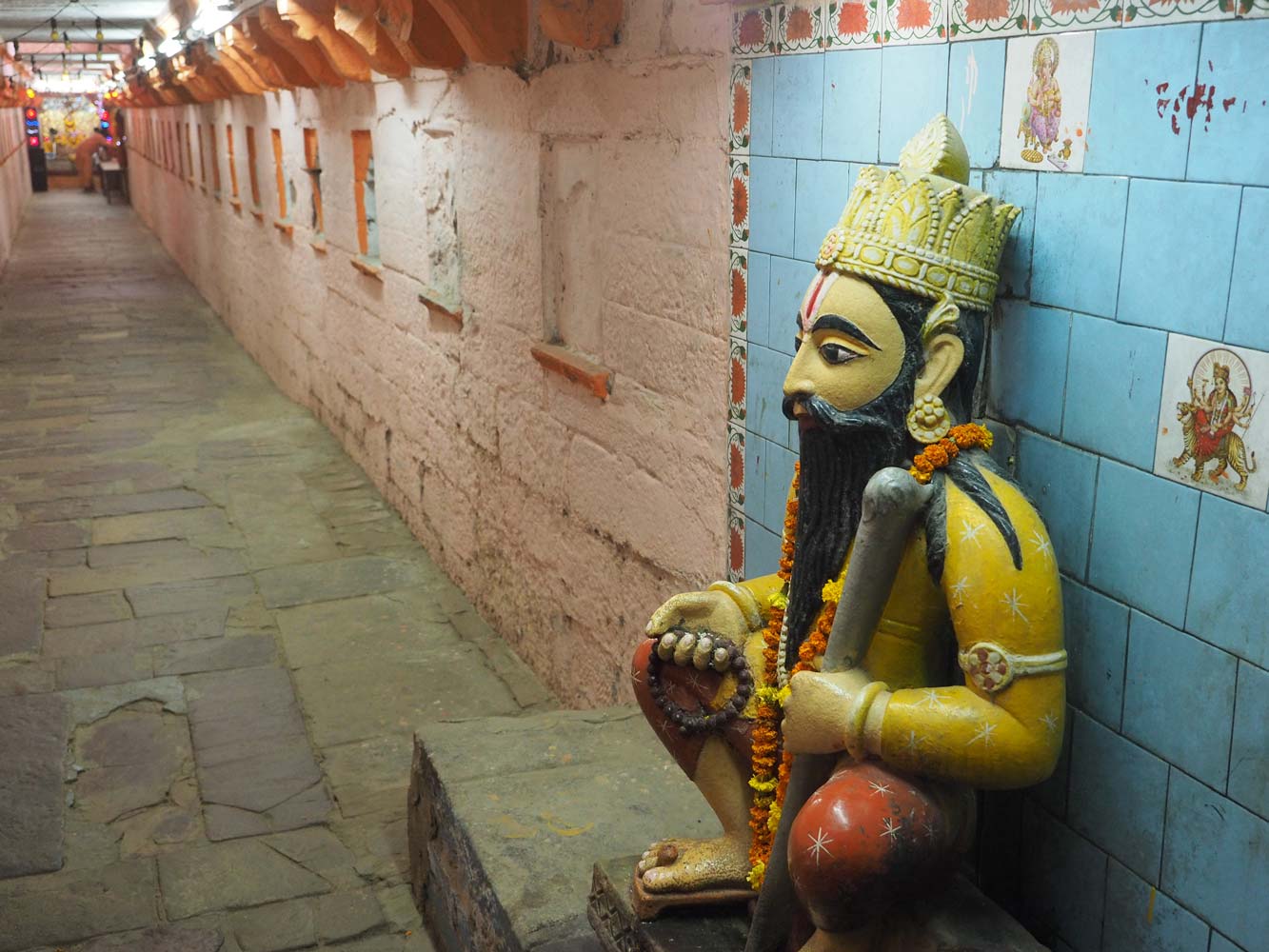
A corridor in
Patalpuri Temple (Akshaivat Temple)
Next I followed a rough footpath upriver along the Yamuna beneath the fort walls, appreciating just how big and high the fort is. Beyond the fort I passed two ghats of wide steps leading to the river’s edge, then continued through riverside parks. A temple attracted many visitors to its collection of shrines, and lots of pilgrims camped out nearby. With darkness falling, I got on an electric autorickshaw, but it broke down a few kilometers later and I continued on foot through busy market areas, which would have been a lot more pleasant if the air hadn’t been so dusty. It’s common for similar types of shops in India to cluster, such as places selling furniture in one area and those with bicycles in another. Eventually I was able to get another autorickshaw and went to the same area of restaurants that I had visited yesterday, and tried a different one, again having a vegetarian thali. In the evening I made a booking for a simple guesthouse in Varanasi, my destination for tomorrow.
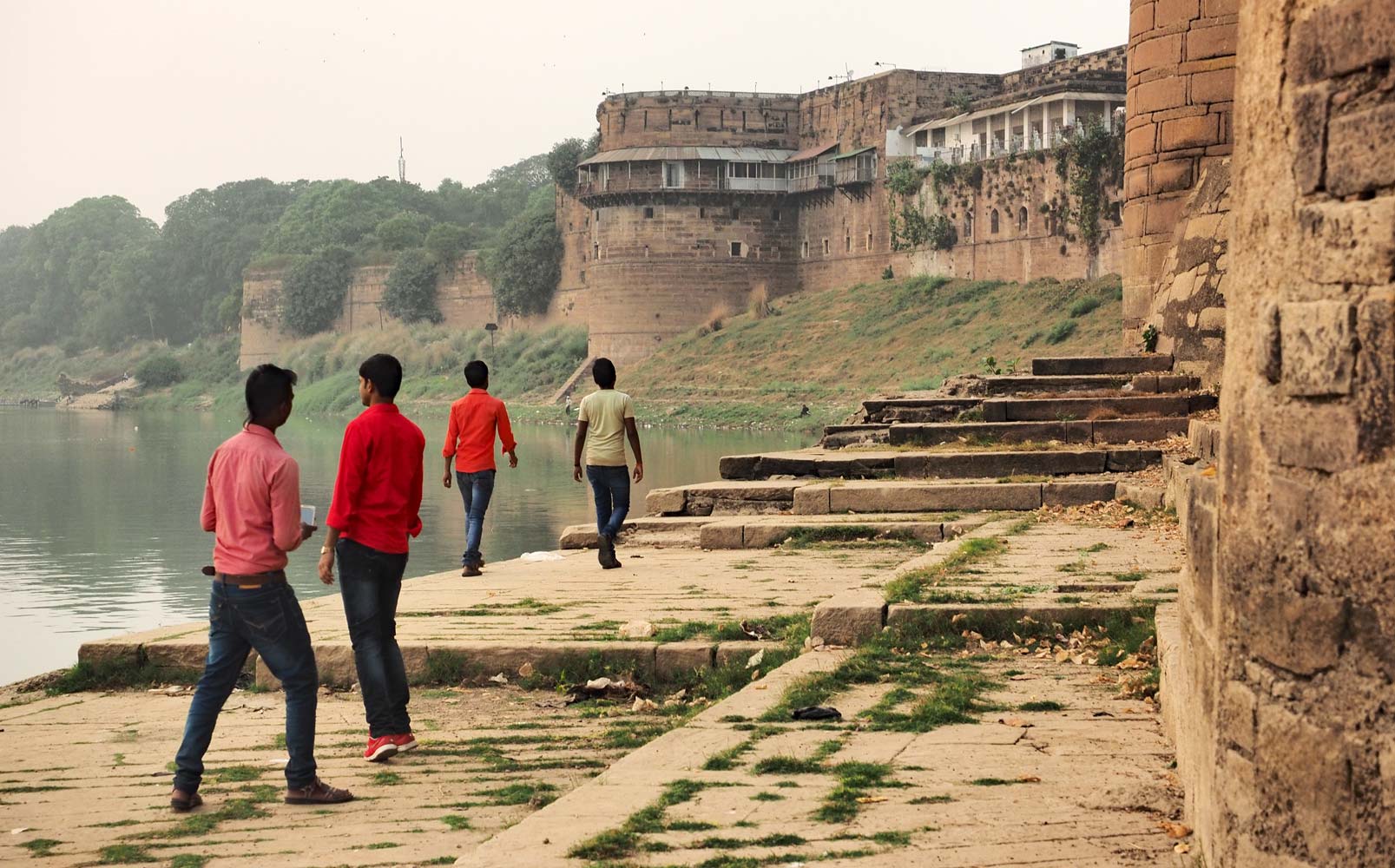
I am walking
upriver along the Yamuna River beneath the fort walls.